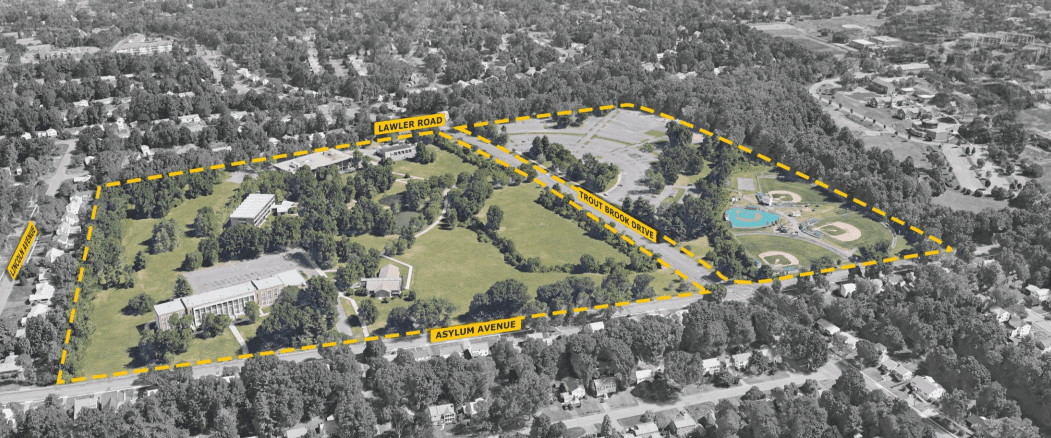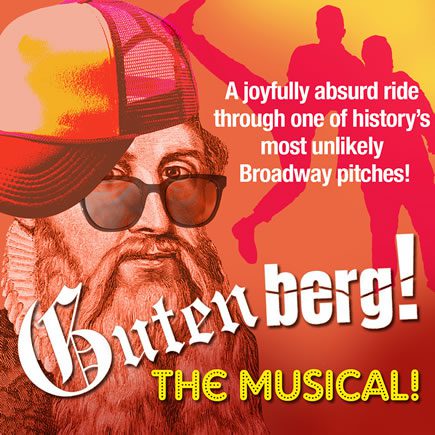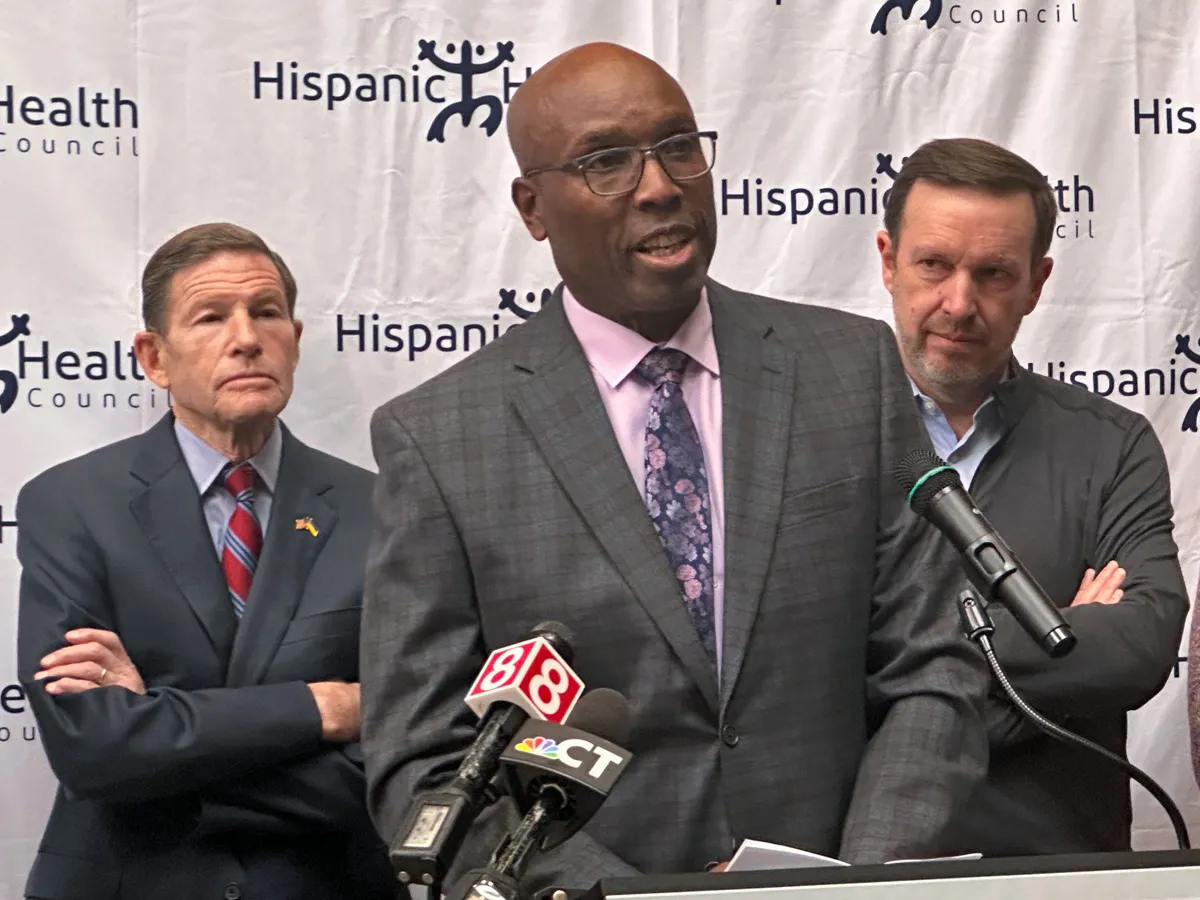West Hartford Town Council Approves Vision Statement for UConn Campus

Audio By Carbonatix

UConn West Hartford campus. Screenshot from Vision Statement report
The Town Council unanimously adopted a resolution approving the vision statement and set of guiding principles for the future of the UConn West Hartford campus.
By Ronni Newton
At a special meeting of the West Hartford Town Council Tuesday night, a resolution to adopt the vision statement and guiding principles for the 58-acre UConn campus property, developed after an extensive public outreach process, was approved 6-0.
The community engagement process, conducted with the assistance of consultant Milone & MacBroom, took place from January through March, and included an online survey completed by more than 2,700 people and two community forums attended by a total of more than 250 people.
The draft of the vision statement and six guiding principles – printed in their entirety below – was reviewed by the Town Council’s Ad Hoc Subcommittee on Economic Development on March 29 before being brought to the full Council as a resolution for approval on Tuesday.
“This vision statement is the culmination of the outreach efforts,” Town Planner Todd Dumais told the Council Tuesday, and is “supported by the community.”
Town Manager Matt Hart told the Council that the vision statement and guiding principles will be of use to future buyers, as well as to the Council when reviewing use of the site, for which they maintain land use authority.
“The feedback I’ve heard form people in the community has been universally positive,” Council member Dallas Dodge, who chairs the Ad Hoc Subcommittee on Economic Development, said regarding the process.
Everyone “recognizes the importance of this property as a community asset,” Dodge said, not just to the neighbors but to the town as a whole.
Dodge said that while the UConn property “can’t be all things to all people,” and some will be happy while others will be disappointed by ultimate use, as West Hartford’s land use authority the Town Council will maintain significant control and the results of community engagement “will be an important set of guiding principles.”
The town does not own the property, but developed a vision statement to assist UConn in marketing the property to potential developers that will then have an understanding of types of projects that the town would be more likely to approve.
Dumais previously told the Ad Hoc Subcommittee that in crafting the vision statement, the town and consultant were trying to capture what the community highlighted as important during the engagement process, namely “grand list growth, preservation of natural resources” and maintaining some of the property for community use. The vision statement was further drilled down, Dumais said, to note the importance of architecture appropriate for the neighborhood, preserving setbacks, maintaining open space, and being sensitive to the residential neighborhood around the campus.
The vision statement reads:
The future development or redevelopment of the UConn West Hartford campus should strike a balance between grand list growth, the protection of natural resources, and the preservation of areas for community use. The campus should maintain its open look and feel and unique blend of green space, forested areas, wetlands, and developed areas. Future development should be high quality, attractive, and at a scale and intensity that is contextually sensitive with the surrounding neighborhood. Through creative and thoughtful site design, future development should be set back from surrounding residential areas and should preserve the open look and feel of the campus while protecting environmentally sensitive areas. The playground, athletic facilities, and supportive parking on the southeastern portion of the site are integral to the town and should be preserved for community use. Innovative ways such as the creation of public-private partnerships to maximize areas for community use on the campus, such as an extension of the Trout Brook Trail, are highly encouraged.
The guiding principles are:
- The UConn West Hartford campus presents an opportunity for some grand list growth in a contextually sensitive manner
- Explore development or redevelopment opportunities that provides for a mix of uses incorporating creative and high quality design that will enhance the Town’s fiscal well-being
- Intensity and changes of use must be carefully analyzed and reviewed for compatibility with the neighborhood. Specific consideration should be given to ensure that the open look and feel of the campus is maintained; that ample buffers, trees and green areas are protected; and that public access and use to meaningful areas of functional open space is preserved
- Embrace opportunities for the growth and retention of uses strongly supported by the community, such as cultural, educational, and recreational, on all or portions of the campus
- Ensure future development or redevelopment protects and enhances environmentally sensitive areas, features, wetlands and floodplain resources
- Robust community engagement should continue as part of any effort pertaining to the reuse of the campus, especially those leading to land use decisions.
Councilors Leon Davidoff, Dallas Dodge, Mary Fay, Liam Sweeney, and Ben Wenograd, as well as Minority Leader Chris Barnes, voted in favor of the resolution. Mayor Shari Cantor, who is a trustee of the University of Connecticut, recused herself from the discussion and vote, and Deputy Mayor Beth Kerrigan and council member Chris Williams were absent.
On Monday, UConn Special Counsel Richard Orr notified town officials that the University will be installing security fencing around three of the now-vacant buildings on the former campus.
UConn has been marketing the campus property since the town decided to terminate the Purchase and Sale Agreement in December. UConn spokesperson Stefanie Reitz said Monday that UConn is “still negotiating with a handful” of potential purchasers, but does not yet have a contract in place.
Like what you see here? Click here to subscribe to We-Ha’s newsletter so you’ll always be in the know about what’s happening in West Hartford!




Whatever happened with the original Chinese school here? The whole thing is strange, they wanted to pay $12.6 million, but that was blocked. WH was then going to buy it for $5 million, but that was too much with $6 million or so in contaminant, and other additional cleanup. Then it was $1 million, of which $250k was already paid. Also rejected–a sudden budget crunch from general CT funding cuts to WH or what have you. The Chinese school seems well within the general purpose of the land…a former school. Wouldn’t a worse-case scenario have been to pay the $750k remaining, spend $6/$7 million for cleanup, for maybe $8 million total, and sell it to the Chinese school for $12.6 million? They had a legitimate offer and plan for the land 2 years ago, now, instead, we’re going to fence it off from trespassers at additional expense. Can’t figure why WH making, say, $4+ million, on a deal selling to a school that wants to use the land for its intended use as a school was rejected. 2 years ago that was, it’s been vacant all this time, how is that economical? If not the Chinese school, then let WH at least find the $750k to buy it outright. Then WH could have (my personal choice for the land)…a huge dog park. If that’s not in the budget, what better could we ask for than a school, paying $12.6 million for a school property WH (thought they) wanted for $1 million? There’s something rather strange about the whole thing.
The Chinese school was a slam dunk, but a few short-sighted squawkers were able to derail that plan b.c they convinced enough people that the Chinese kids would make our students look bad.
I hope I am wrong here, but I think we all need to get used to looking at a fence around those buildings for the next 5+ years.
Also LOL at those guiding principles. Might as well cut and paste those principles in every P&Z doc in the world. Completely generic and steeped in rainbows and unicorns!
[…] April, following a community engagement process, the West Hartford Town Council adopted a vision statement for the property, as well as a set of guiding principles, one of which is: “Intensity and changes of use must […]
[…] April, following a community engagement process, the West Hartford Town Council adopted a vision statement for the property, as well as a set of guiding principles, one of which is: “Intensity and changes of use must be […]
[…] “Fintech Village is being designed to fit organically into the natural beauty and scale of the campus’ 58-acre landscape,” Poor’s letter states. “It will be open, accessible and walkable, with green spaces and recreational features which reflect West Hartford’s 2018 Community Visioning Process.” […]
[…] and be an open campus with features and benefits that West Hartford residents spoke of in their town-wide Community Visioning Process last […]
[…] UConn announced its plans to relocate its Greater Hartford campus downtown in 2012, and although the town ultimately chose not to purchase the campus several years ago, it undertook a robust community engagement process to develop a vision statement for the property, which was adopted by the Town Council in April 2018. […]
[…] UConn initially announced its plans to relocate its Greater Hartford campus downtown in 2012, and although the town ultimately chose not to purchase the campus several years ago, it undertook a robust community engagement process to develop a vision statement for the property, which was adopted by the Town Council in April 2018. […]
[…] UConn initially announced its plans to relocate its Greater Hartford campus downtown in 2012, and although the town ultimately chose not to purchase the campus several years ago, it undertook a robust community engagement process to develop a vision statement for the property, which was adopted by the Town Council in April 2018. […]
[…] belong in our neighborhood for a number of reasons,” said Sandra Rampertab. The town conducted a visioning process in 2018 which indicated overwhelming support for making the property a park, she said, and the “town […]